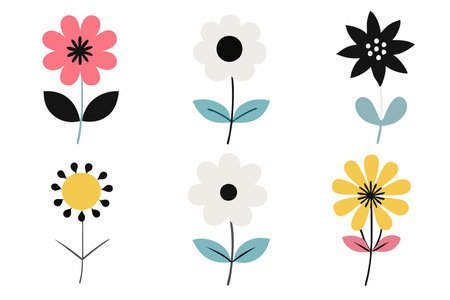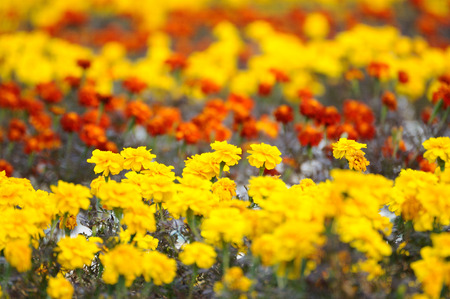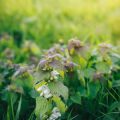1. Understanding Seasonal Color Theory
Designing flower beds that bloom beautifully all year starts with understanding how colors work together and change with the seasons. Seasonal color theory helps you create vibrant, eye-catching gardens by using colors that complement each other and reflect the natural rhythm of the year. Lets break down how this works and how you can apply it to your own landscape design.
How Colors Shift Through the Seasons
Each season brings its own mood and color palette, which you can use to your advantage in the garden:
| Season | Typical Color Palette | Common Flower Choices |
|---|---|---|
| Spring | Soft pastels like pink, lavender, baby blue, and light yellow | Tulips, daffodils, hyacinths, pansies |
| Summer | Bright and bold hues such as red, orange, hot pink, and royal blue | Zinnias, marigolds, black-eyed Susans, petunias |
| Fall | Warm tones like burnt orange, golden yellow, burgundy, and deep purple | Mums, asters, ornamental kale, sedum |
| Winter | Cool neutrals like white, silver, evergreen tones, and pops of red | Cyclamen, hellebores (Lenten rose), winterberry holly, camellias |
Color Schemes That Work Year-Round
You don’t need a degree in art to use color schemes effectively. Here are three easy-to-use methods for combining colors in your garden beds:
Complementary Color Scheme
This pairs two colors that sit opposite each other on the color wheel—like purple and yellow or red and green. These combinations create high contrast and lots of visual excitement. Try pairing golden coreopsis with purple salvia in summer for a dynamic look.
Analogous Color Scheme
This uses three colors that sit next to each other on the color wheel—for example, red, orange-red, and orange. Analogous schemes feel more harmonious and soothing. A fall bed with shades of orange marigolds, rust mums, and golden rudbeckia is a great example.
Monochromatic Color Scheme
This approach sticks to one color but uses different shades and textures to add interest. Think of an all-white winter garden filled with snowdrops, dusty miller, white hellebores, and variegated evergreens.
Tips for Blending Seasonal Colors Seamlessly
- Layer your plantings: Combine early-, mid-, and late-season bloomers so something is always flowering.
- Add evergreens or ornamental grasses: These provide structure and color even when flowers fade.
- Use containers or annuals: Easily swap them out as the seasons change to refresh your palette.
- Repeat colors throughout your yard: This creates unity across different beds or borders.
By understanding seasonal color theory and applying these simple design techniques, youll create flower beds that remain colorful and visually interesting no matter what time of year it is.
2. Selecting Plants for Year-Round Interest
Creating a flower bed that looks vibrant all year long starts with picking the right mix of plants. To keep color in your garden throughout the seasons, you’ll want to combine early spring bloomers, summer showstoppers, fall favorites, and winter-interest plants like evergreens or those with colorful stems or berries. It’s all about layering different bloom times and textures so there’s always something catching the eye.
Start with Seasonal Bloom Times
The key to continuous color is choosing flowers and foliage that peak at different times of the year. Here’s a simple guide to help you plan:
| Season | Example Plants | Highlights |
|---|---|---|
| Spring | Tulips, Daffodils, Hyacinths, Bleeding Heart | Bright pops of color after winter; great for borders and mass planting |
| Summer | Daylilies, Coneflowers, Black-eyed Susans, Zinnias | Bold blooms in warm tones; long blooming period |
| Fall | Asters, Chrysanthemums, Sedum Autumn Joy | Adds late-season color; pairs well with ornamental grasses |
| Winter | Evergreens (Boxwood, Juniper), Red Twig Dogwood, Hellebores | Foliage interest and structure when flowers are dormant |
Think Beyond Flowers: Foliage Matters Too
Flowers aren’t the only way to add color—foliage plays a big role too. Look for plants with variegated leaves, rich purple hues, silver tones, or even colorful bark. For example, Heuchera (Coral Bells) offers bold leaf colors from lime green to deep burgundy and works well in every season.
Foliage Color Ideas by Season
- Spring: Fresh green hostas and chartreuse ferns bring brightness as things start growing.
- Summer: Deep green cannas and purple-leafed coleus make flower colors pop.
- Fall: Ornamental kale and burning bush provide reds and purples as the weather cools.
- Winter: Evergreen shrubs and grasses add structure and calm greens during the colder months.
Create Layers for Visual Impact
A successful year-round flower bed has layers—tall plants in the back, medium ones in the middle, and low-growing varieties up front. This ensures constant coverage and prevents empty-looking spaces when some plants go dormant.
Quick Tip:
Choose at least one plant per season that will be your “star” – something that will really stand out when it’s in full form. Then surround it with supporting plants that fill in before or after its peak time.
This seasonal approach helps you maintain visual interest no matter the month. With thoughtful planning and a little experimentation, your garden can be a rotating showcase of blooms and textures all year round.

3. Design Strategies for Seasonal Blooming
Creating a flower bed that stays colorful through all four seasons isnt just about picking the right plants—its also about how you arrange them. With smart layout techniques, you can enjoy continuous blooms and vibrant displays year-round. Heres how to layer your plants, plan bloom times, and design focal points that keep your garden looking fresh in every season.
Layering Plants for Depth and Color
Layering is key to a dynamic flower bed. Think of it like arranging a photo: taller plants go in the back, medium in the middle, and shorter ones up front. This creates depth and ensures every plant gets its moment in the spotlight.
| Plant Height | Placement | Example Plants |
|---|---|---|
| Tall (24″+) | Back of the bed | Delphinium, Hollyhock, Sunflower |
| Medium (12″–24″) | Middle layer | Black-eyed Susan, Coneflower, Salvia |
| Short (<12″) | Front edge | Alyssum, Pansy, Creeping Phlox |
Creating Focal Points That Draw the Eye
Every flower bed needs a star—something that catches attention and adds personality. Focal points can be bold flowering plants, decorative containers, or even garden art. Place these elements slightly off-center to create a natural flow and visual interest.
Ideas for Seasonal Focal Points:
- Spring: Tulips in bright colors or a flowering dogwood tree
- Summer: A large container filled with zinnias or dahlias
- Fall: Ornamental grasses or mums in warm tones
- Winter: Evergreen shrubs or red-twig dogwood branches
Staggering Bloom Times for Year-Round Color
A well-planned flower bed includes plants that bloom at different times throughout the year. By choosing varieties with staggered bloom cycles, you can keep your garden lively from January to December.
| Season | Blooming Plants |
|---|---|
| Spring | Daffodils, Tulips, Hyacinths, Bleeding Heart |
| Summer | Lavender, Coneflower, Daylily, Coreopsis |
| Fall | Asters, Sedum, Chrysanthemums, Ornamental Kale |
| Winter | Hellebores, Camellias, Witch Hazel, Winter Jasmine |
Pro Tip:
Use perennials as your base for reliable yearly blooms and mix in annuals for pops of seasonal color that you can easily change out each year.
By combining thoughtful layering, standout focal points, and careful bloom scheduling, your flower beds will stay cheerful and colorful no matter the month.
4. Incorporating Native and Climate-Appropriate Plants
When designing flower beds that stay colorful all year, choosing plants that naturally thrive in your region is a smart move. Native and climate-appropriate plants not only reduce maintenance and water use—they also support local wildlife like pollinators and birds. Plus, they can add unique beauty to your landscape throughout the seasons.
Why Choose Native and Drought-Tolerant Plants?
Native plants are adapted to your local soil, weather, and pests, making them easier to care for than non-native species. Drought-tolerant plants are especially important in areas where water conservation is a priority. By including these types of plants in your seasonal color palette, you can enjoy a vibrant garden that’s both eco-friendly and sustainable.
Regional Plant Suggestions
Here are some examples of native and drought-tolerant flowering plants organized by U.S. region. These selections provide seasonal color while being suitable for their respective climates.
| Region | Native/Drought-Tolerant Plants | Seasonal Color |
|---|---|---|
| West (e.g., California, Arizona) | California poppy, Penstemon, Desert marigold | Spring to Fall blooms in orange, purple, yellow |
| Southwest (e.g., Texas, New Mexico) | Blackfoot daisy, Salvia greggii, Red yucca | Long blooming season with white, red, pink hues |
| Southeast (e.g., Florida, Georgia) | Coreopsis, Blanket flower, Butterfly weed | Bright yellows and oranges from Spring through Summer |
| Northeast (e.g., New York, Pennsylvania) | Bee balm, Purple coneflower, New England aster | Pinks and purples from Summer into Fall |
| Midwest (e.g., Illinois, Ohio) | Prairie blazing star, Wild bergamot, Black-eyed Susan | Seasonal colors in lavender, yellow, and gold |
| Pacific Northwest (e.g., Oregon, Washington) | Lupine, Oregon grape, Columbine | Cool-toned blues and yellows from Spring to early Fall |
Tips for Adding These Plants to Your Design
Mix for Year-Round Color
Select a mix of plants that bloom at different times of the year. This ensures continuous color even as the seasons change.
Create Layers for Visual Interest
Use taller native grasses or shrubs as backdrops with medium-height flowers in the middle and low-growing ground covers in front. This layering technique adds depth and texture to your flower beds.
Group by Water Needs
Place drought-tolerant species together so you can water efficiently without overwatering more sensitive plants nearby.
A Quick Planning Tip:
If you’re unsure which native plants work best in your area, check with your local cooperative extension office or native plant society. They often have planting guides specific to your region.
By blending native and climate-appropriate plants into your seasonal design plan, you’ll create a beautiful flower bed that’s easy to maintain—and great for the planet too.
5. Maintenance Tips to Keep Beds Colorful Year-Round
Keeping your flower beds vibrant in every season takes more than just planting the right flowers—it’s about consistent, thoughtful care. Here are some practical tips to ensure your garden stays colorful all year long.
Soil Preparation: Build a Strong Foundation
Healthy soil is the backbone of any thriving flower bed. Before planting seasonal color palettes, test your soils pH and nutrient levels. Most flowering plants prefer slightly acidic to neutral soil (pH 6.0–7.0). Add compost or well-rotted manure to improve texture and provide essential nutrients.
Soil Prep Checklist:
| Task | When to Do It |
|---|---|
| Test soil pH & nutrients | Early spring or fall |
| Add compost or organic matter | Before each new planting season |
| Aerate compacted soil | Spring or after heavy rainfall |
Fertilizing: Feed for Continuous Blooms
A regular fertilizing schedule supports healthy growth and encourages blooming. Use a balanced fertilizer (such as 10-10-10) during the growing seasons—spring through early fall. For specific flower types, such as annuals or perennials, choose formulas tailored to their needs.
Fertilizer Timing Guide:
| Season | Recommended Fertilizer Type |
|---|---|
| Spring | Slow-release granular fertilizer for overall growth |
| Summer | Liquid bloom booster for flowering support |
| Fall | Mild organic feed to prepare plants for dormancy |
Pruning: Encourage New Growth and Shape
Tidy up your beds with regular pruning to remove spent blooms (deadheading), shape plants, and prevent disease. Perennials benefit from being cut back after flowering, while shrubs may need light shaping in early spring or late fall.
- Deadheading: Weekly during peak bloom seasons to promote continuous flowers.
- Cutting Back: Late fall for perennials, early spring for woody plants.
Seasonal Clean-Up: Prepare for What’s Next
A little clean-up each season keeps pests away and makes room for fresh blooms. Remove dead leaves, pull weeds regularly, and refresh mulch twice a year to retain moisture and suppress weeds.
Main Seasonal Tasks:
| Season | Main Tasks |
|---|---|
| Spring | Add mulch, prune winter damage, fertilize new growth |
| Summer | Irrigate deeply, deadhead often, monitor pests/diseases |
| Fall | Cull summer annuals, plant cool-season flowers, compost leaves |
| Winter | Cover sensitive plants, clean tools, plan next season’s palette |
A bit of ongoing attention goes a long way toward maintaining that vibrant seasonal color you worked hard to design. With these practical maintenance steps, your flower beds can bloom beautifully all year round.


